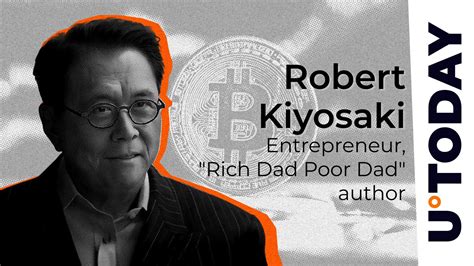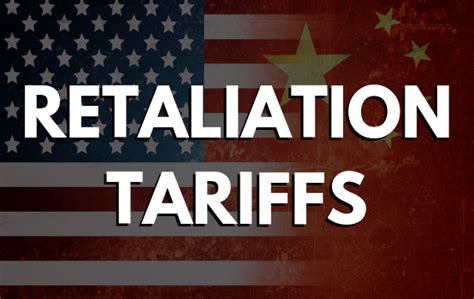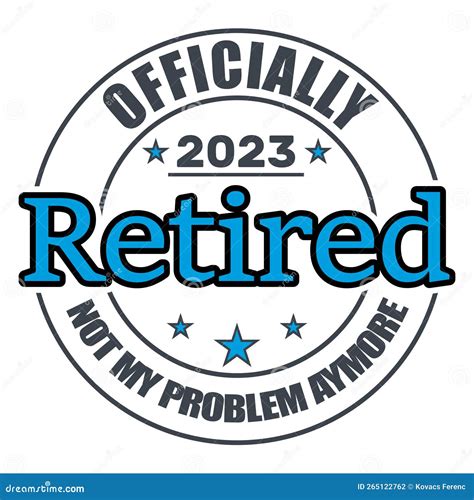
Robert Kiyosaki, author of “Rich Dad Poor Dad,” is once again warning investors of an impending and catastrophic market crash, urging them to protect their wealth by investing in assets like gold, silver, and Bitcoin. Kiyosaki claims this crash will be the “biggest ever,” dwarfing previous economic downturns.
Robert Kiyosaki, the personal finance educator and author of the bestselling book “Rich Dad Poor Dad,” has issued a stark warning to investors, predicting an imminent and devastating market crash of unprecedented proportions. In a series of recent pronouncements via social media and interviews, Kiyosaki has urged individuals to take immediate steps to safeguard their wealth by investing in tangible assets such as gold, silver, and Bitcoin. His rationale hinges on a deep-seated distrust of traditional financial institutions, government policies, and the stability of the U.S. dollar.
Kiyosaki’s grim forecast paints a picture of an economic landscape teetering on the brink of collapse, fueled by factors ranging from excessive government debt to inflationary pressures and the erosion of confidence in established financial systems. He argues that the current economic climate is unsustainable and that a major correction is inevitable. This correction, according to Kiyosaki, will not be a typical recession but a catastrophic event that will reshape the financial world.
“Biggest crash EVER coming,” Kiyosaki stated in a recent tweet. He emphasizes the need for proactive measures to protect oneself from the potential fallout. His recommended strategy centers on diversifying investments beyond traditional stocks and bonds and allocating a significant portion of one’s portfolio to alternative assets like precious metals and cryptocurrencies.
Kiyosaki’s predictions are not new. He has consistently warned of impending economic doom for several years, often citing similar concerns about government overspending, inflation, and the fragility of the financial system. While his forecasts have not always materialized precisely as predicted, they have resonated with a segment of the investing public that is increasingly skeptical of conventional financial advice and wary of the potential risks lurking beneath the surface of seemingly stable markets.
The core of Kiyosaki’s argument rests on the belief that the U.S. dollar, traditionally considered a safe haven currency, is being systematically devalued by excessive money printing and unsustainable debt levels. He contends that the Federal Reserve’s policies of quantitative easing and low interest rates have artificially inflated asset prices and created a bubble that is destined to burst.
“The problem is, our leaders are fake,” Kiyosaki said in an interview. “The Fed is fake. They’re printing money like mad. So what are you going to do? You have to protect yourself.”
He advocates for a shift in mindset, urging individuals to become financially literate and take control of their own financial destinies rather than relying on government or traditional financial advisors to protect them. He views gold and silver as time-tested stores of value that have historically held their purchasing power during periods of economic turmoil. Bitcoin, in his view, represents a modern alternative to traditional currencies, offering a decentralized and potentially inflation-resistant means of storing wealth.
While Kiyosaki’s views are often considered controversial and even alarmist, they have attracted a significant following among those who believe that the current financial system is fundamentally flawed and that a major crisis is unavoidable. His books and seminars have empowered countless individuals to question conventional wisdom and explore alternative investment strategies.
The warnings come amid growing concerns about the health of the global economy. Inflation remains stubbornly high in many countries, and central banks are struggling to bring it under control without triggering a recession. Geopolitical tensions, supply chain disruptions, and rising energy prices are also contributing to the uncertainty.
The potential impact of a major market crash would be far-reaching, affecting not only investors but also businesses, consumers, and governments. A significant decline in asset values could lead to a sharp contraction in economic activity, job losses, and increased social unrest.
Kiyosaki’s advice to invest in gold, silver, and Bitcoin is based on the premise that these assets will retain their value or even appreciate during a market downturn. Gold and silver have historically been considered safe haven assets, as investors tend to flock to them during times of uncertainty. Bitcoin, while a relatively new asset class, has also been touted as a potential hedge against inflation and currency devaluation.
However, it is important to note that these assets are not without risk. The prices of gold and silver can be volatile and are influenced by a variety of factors, including interest rates, inflation expectations, and geopolitical events. Bitcoin is even more volatile and subject to regulatory risks, technological disruptions, and market manipulation.
Financial experts generally advise investors to diversify their portfolios across a range of asset classes to mitigate risk. While allocating a portion of one’s portfolio to gold, silver, or Bitcoin may be a reasonable strategy for some investors, it is important to do so prudently and in accordance with one’s individual risk tolerance and investment objectives.
It is also crucial to conduct thorough research and seek advice from qualified financial professionals before making any investment decisions. Kiyosaki’s warnings should be viewed as one perspective among many, and investors should not rely solely on his advice without considering other viewpoints and conducting their own due diligence.
The global economic outlook remains uncertain, and the possibility of a significant market correction cannot be ruled out. While Kiyosaki’s prediction of the “biggest crash EVER” may be hyperbolic, it serves as a reminder to investors to be vigilant, diversify their portfolios, and prepare for potential economic headwinds. Prudent financial planning and a long-term investment strategy are essential for navigating the complexities of the modern financial landscape.
Diving Deeper: Unpacking Kiyosaki’s Core Arguments
To fully understand Kiyosaki’s warnings, it’s essential to dissect the core arguments underpinning his pessimistic outlook. These arguments, frequently reiterated across his books, interviews, and social media posts, center around the following key themes:
-
The Devaluation of the U.S. Dollar: This is perhaps the most central tenet of Kiyosaki’s economic philosophy. He believes that the U.S. dollar is being systematically devalued due to excessive money printing by the Federal Reserve. This money printing, often referred to as quantitative easing, is designed to stimulate the economy by injecting liquidity into the financial system. However, Kiyosaki argues that it ultimately leads to inflation, eroding the purchasing power of the dollar. He often points to the increasing national debt as further evidence of the dollar’s fragility. The more debt the U.S. government amasses, the weaker the dollar becomes, in his view. He argues that the dollar is no longer backed by gold or any other tangible asset, making it vulnerable to manipulation and devaluation.
-
The Unsustainability of Government Debt: Kiyosaki views the escalating national debt as a ticking time bomb. He believes that the government’s reliance on borrowing to finance its spending is unsustainable and will eventually lead to a fiscal crisis. He argues that the interest payments on the national debt are becoming increasingly burdensome, diverting resources away from essential services and further exacerbating the debt problem. He fears that the government will eventually be forced to either default on its debt or print even more money, both of which would have disastrous consequences for the economy.
-
The Inflationary Consequences of Monetary Policy: Kiyosaki is a vocal critic of the Federal Reserve’s monetary policy, particularly its low interest rate policy. He argues that artificially low interest rates encourage excessive borrowing and speculation, leading to asset bubbles and inflation. He believes that the Fed’s attempts to control inflation are ultimately futile and that the only way to truly tame inflation is to allow interest rates to rise to more natural levels. However, he acknowledges that raising interest rates too quickly could trigger a recession. This puts the Fed in a difficult position, according to Kiyosaki, as any action it takes is likely to have negative consequences.
-
The Corruption and Incompetence of Financial Institutions and Government Leaders: Kiyosaki harbors a deep distrust of traditional financial institutions and government leaders. He believes that they are often more concerned with their own self-interests than with the well-being of the public. He accuses them of manipulating the financial system for their own benefit and of engaging in corrupt practices. He views the government’s response to the 2008 financial crisis as evidence of this corruption, arguing that the bailout of the banks was unfair to taxpayers and that it rewarded reckless behavior.
-
The Need for Financial Literacy and Self-Reliance: Kiyosaki emphasizes the importance of financial literacy and self-reliance. He believes that individuals should take control of their own financial destinies rather than relying on government or traditional financial advisors to protect them. He encourages people to educate themselves about personal finance, investing, and economics so that they can make informed decisions about their money. He also advocates for entrepreneurship and the creation of multiple income streams as a way to achieve financial independence.
Historical Context: Kiyosaki’s Track Record and Similar Predictions
It’s crucial to analyze Kiyosaki’s predictions in the context of his past forecasts and the broader history of economic doomsaying. He has consistently warned of impending economic crises for many years, often using similar rhetoric and recommending the same investment strategies. While some of his predictions have aligned with subsequent events, others have not materialized as he envisioned.
For example, Kiyosaki has repeatedly predicted a collapse of the stock market and a surge in the price of gold and silver. While there have been periods of market volatility and increases in precious metal prices, a complete collapse has not occurred. This raises questions about the accuracy and reliability of his forecasts.
It’s also important to note that Kiyosaki is not alone in his warnings about an impending economic crisis. Throughout history, there have been numerous economists, analysts, and commentators who have predicted similar doom and gloom scenarios. These predictions are often based on legitimate concerns about economic imbalances, government policies, and global events. However, many of these predictions have proven to be inaccurate or have been exaggerated.
The tendency to predict economic crises is often rooted in a combination of factors, including:
- Recency Bias: The tendency to overemphasize recent events and assume that they will continue into the future. For example, if the stock market has recently experienced a period of volatility, individuals may be more likely to predict a future market crash.
- Confirmation Bias: The tendency to seek out information that confirms one’s existing beliefs and to ignore information that contradicts them. Individuals who believe that an economic crisis is imminent may be more likely to pay attention to news articles and commentary that support this view.
- Loss Aversion: The tendency to feel the pain of a loss more strongly than the pleasure of a gain. This can lead individuals to be overly cautious and to focus on the potential risks of investing rather than the potential rewards.
While it’s important to be aware of these biases, it’s also important to acknowledge that economic crises do occur. The 2008 financial crisis, the dot-com bubble of the late 1990s, and the Great Depression of the 1930s are all examples of major economic downturns that had devastating consequences. Therefore, it’s prudent to be prepared for potential economic challenges and to take steps to protect one’s financial well-being.
Alternative Perspectives: Counterarguments to Kiyosaki’s Views
While Kiyosaki’s warnings resonate with a segment of the investing public, it’s crucial to consider alternative perspectives that challenge his pessimistic outlook. Many economists and financial analysts hold contrasting views, arguing that the U.S. economy is more resilient than Kiyosaki suggests and that the risks he highlights are either overblown or manageable.
Here are some common counterarguments to Kiyosaki’s core claims:
- The U.S. Dollar’s Continued Dominance: While acknowledging the concerns about the national debt and money printing, many economists argue that the U.S. dollar remains the world’s reserve currency and that its dominance is unlikely to be challenged in the near future. They point to the size and stability of the U.S. economy, the strength of its financial institutions, and the global demand for U.S. Treasury bonds as factors that support the dollar’s continued strength. They also argue that alternative currencies, such as the euro and the Chinese yuan, lack the necessary scale and credibility to replace the dollar as the world’s primary reserve currency.
- The Manageability of Government Debt: While the national debt is undoubtedly high, many economists argue that it is manageable as long as the economy continues to grow. They point to the fact that the U.S. government has a long history of successfully managing its debt and that it has the capacity to raise taxes or cut spending if necessary. They also argue that the benefits of government spending, such as investments in infrastructure and education, outweigh the costs of borrowing.
- The Federal Reserve’s Inflation-Fighting Tools: While acknowledging the challenges of controlling inflation, many economists believe that the Federal Reserve has the tools and the expertise to bring inflation under control without triggering a severe recession. They point to the Fed’s ability to raise interest rates and to reduce its balance sheet as ways to cool down the economy and to curb inflation. They also argue that the Fed is committed to maintaining price stability and that it will take whatever measures are necessary to achieve this goal.
- The Resilience of the Financial System: While acknowledging the risks of financial instability, many economists argue that the financial system is more resilient than it was before the 2008 financial crisis. They point to the stricter regulations that have been put in place since the crisis, such as higher capital requirements for banks and increased oversight of financial institutions. They also argue that the financial system has become more diversified and that it is less reliant on any single institution or market.
- The Potential for Innovation and Growth: While acknowledging the economic challenges facing the world, many economists remain optimistic about the potential for innovation and growth. They point to the rapid pace of technological change, the increasing globalization of the economy, and the growing demand for goods and services in emerging markets as factors that could drive future economic growth. They also argue that entrepreneurship and innovation are key to creating new jobs and to raising living standards.
Practical Implications: What Investors Should Do Now
Regardless of whether one agrees with Kiyosaki’s dire predictions, it’s always prudent to take steps to protect one’s financial well-being. Here are some practical steps that investors can take now to prepare for potential economic challenges:
- Diversify Your Portfolio: Diversification is a key principle of investing that can help to reduce risk. By spreading your investments across a range of asset classes, such as stocks, bonds, real estate, and commodities, you can reduce the impact of any single investment on your overall portfolio.
- Review Your Asset Allocation: Your asset allocation should be based on your individual risk tolerance, investment objectives, and time horizon. If you are close to retirement, you may want to consider reducing your exposure to stocks and increasing your exposure to bonds.
- Rebalance Your Portfolio Regularly: Over time, your asset allocation may drift away from your target allocation due to market fluctuations. It’s important to rebalance your portfolio regularly to ensure that it remains aligned with your investment goals.
- Build an Emergency Fund: An emergency fund can provide a financial cushion in case of unexpected expenses or job loss. Aim to have at least three to six months’ worth of living expenses saved in a liquid account.
- Pay Down Debt: High levels of debt can make it difficult to weather an economic downturn. Focus on paying down high-interest debt, such as credit card debt, as quickly as possible.
- Increase Your Financial Literacy: The more you know about personal finance, investing, and economics, the better equipped you will be to make informed decisions about your money. Read books, articles, and blogs about personal finance, and consider taking a financial literacy course.
- Seek Advice from a Qualified Financial Professional: A qualified financial professional can help you to develop a financial plan that is tailored to your individual needs and circumstances. They can also provide you with advice on investing, retirement planning, and other financial matters.
- Stay Informed: Stay up-to-date on the latest economic news and developments. This will help you to make informed decisions about your investments and to prepare for potential economic challenges. However, be sure to rely on credible sources of information and to avoid being swayed by sensationalist headlines or alarmist predictions.
Conclusion: A Call for Vigilance and Prudent Planning
Robert Kiyosaki’s warnings about an impending market crash should be viewed with a healthy dose of skepticism but also as a reminder to be vigilant and to take steps to protect one’s financial well-being. While his predictions may not come to pass exactly as he envisions, the possibility of a significant market correction cannot be ruled out.
By diversifying your portfolio, reviewing your asset allocation, building an emergency fund, and increasing your financial literacy, you can prepare for potential economic challenges and increase your chances of achieving your financial goals. Remember that prudent financial planning and a long-term investment strategy are essential for navigating the complexities of the modern financial landscape.
Frequently Asked Questions (FAQ)
1. What specific assets does Robert Kiyosaki recommend investing in to protect against the coming crash?
Kiyosaki primarily recommends investing in gold, silver, and Bitcoin. He views these assets as safe havens that can retain or increase their value during economic downturns. He sees gold and silver as time-tested stores of value and Bitcoin as a modern, decentralized alternative to traditional currencies.
2. Is this the first time Robert Kiyosaki has warned about a major market crash?
No, Kiyosaki has consistently warned about impending economic crises for several years. He has often cited similar concerns about government overspending, inflation, and the fragility of the financial system in his previous warnings.
3. Are there any potential downsides to investing in gold, silver, and Bitcoin as Kiyosaki suggests?
Yes, all investments carry risk. The prices of gold and silver can be volatile and are influenced by factors like interest rates and geopolitical events. Bitcoin is even more volatile and subject to regulatory risks, technological disruptions, and market manipulation. Financial experts generally advise diversifying portfolios rather than concentrating solely on these assets.
4. What are some alternative perspectives on Kiyosaki’s prediction of an impending market crash?
Many economists and financial analysts argue that the U.S. economy is more resilient than Kiyosaki suggests. They point to the strength of the U.S. dollar, the manageability of government debt, the Federal Reserve’s tools for controlling inflation, and the potential for innovation and growth as reasons to be more optimistic about the future.
5. What steps can I take to protect my finances regardless of whether Kiyosaki’s prediction comes true?
Regardless of the accuracy of Kiyosaki’s forecast, it’s always wise to practice sound financial planning. This includes diversifying your investment portfolio, reviewing your asset allocation, building an emergency fund, paying down high-interest debt, increasing your financial literacy, and seeking advice from qualified financial professionals. Staying informed about economic news and developments is also crucial for making informed financial decisions.









